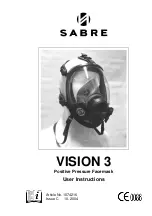
4
TI 01W06A51-10EN
Mar.26,2019-00
5. Install the gateway in a location where there are no other wireless system devices that use
the same frequency band in its vicinity.
If the antenna of another wireless system is near the gateway, LoRaWAN communication
characteristics may be negatively impacted. LoRaWAN uses the 800 MHz frequency band.
To minimize the infl uence, install the gateway as far away as possible from any wireless
systems and mobile phone base stations that use the same frequency band.
2.2
Sushi Sensor Installation Guide
This section describes how to install the Sushi Sensor.
As with the case of the gateway, wireless communications can be available at satisfactory
quality levels by installing the Sushi Sensor in a location where there are no structures or other
obstacles around. However, unlike the gateway, the installation location of the Sushi Sensor
is often restricted. The installation location of the Sushi Sensor depends on the location of the
measuring target; therefore, in some cases, it is diffi cult to raise communication quality by making
any improvements to the installation of the Sushi Sensor.
When there are fl exible options as to how to install the Sushi Sensor, improvement in the
communication distance and/or quality can be expected by considering the following points.
1. Installing Sushi Sensor in a location where there are no surrounding obstacles
2. Avoiding locations near the ground
3. Installing the Sushi Sensor perpendicular to the ground
1. Installing Sushi Sensor in a location where there are no surrounding obstacles
In general, the more vacant space there is around the Sushi Sensor, the more stable
communications will be.
Installed within
the protective
range of the
lightning rod.
There must be
no surrounding
obstacles.
Install the
antenna
perpendicular
to the ground
Installed to
prevent the
antenna from
being interfered
with by the
gateway
installation
pole.
Installed in an elevated location
such as a building rooftop






























